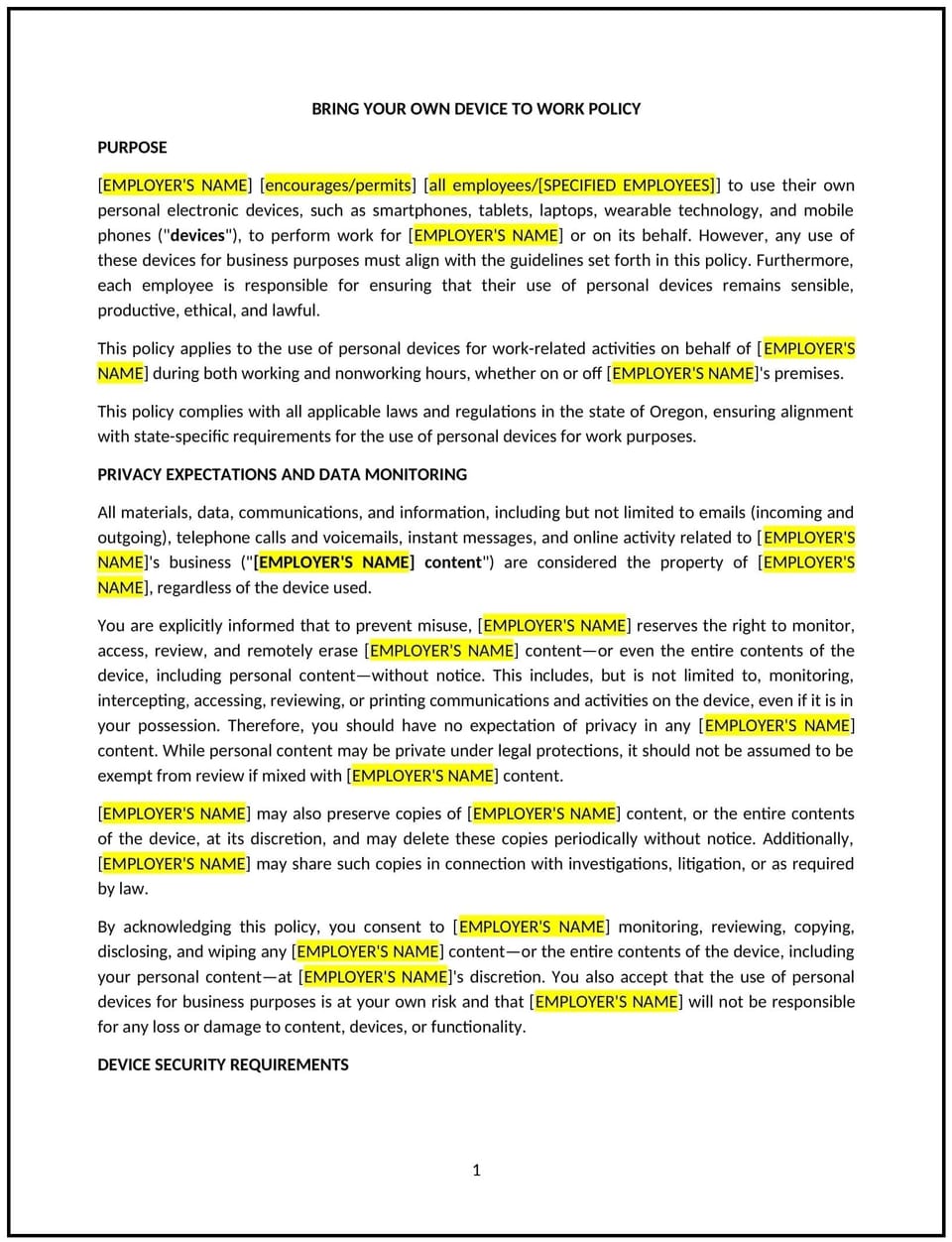Bring your own device to work policy (Oregon): Free template

Bring your own device to work policy (Oregon)
This bring your own device (BYOD) to work policy is designed to help Oregon businesses establish guidelines for employees using personal devices for work purposes. It outlines procedures for device security, data protection, and acceptable use.
By adopting this policy, businesses can enhance flexibility, improve productivity, and protect sensitive information.
How to use this bring your own device to work policy (Oregon)
- Define acceptable use: Clarify what constitutes acceptable use of personal devices for work purposes.
- Address security: Specify requirements for device security, such as password protection and encryption.
- Protect data: Outline procedures for protecting sensitive business information on personal devices.
- Establish support: Provide guidelines for technical support and troubleshooting for personal devices.
- Train employees: Educate employees on the policy and their responsibilities when using personal devices for work.
- Review and update: Assess the policy annually to ensure it aligns with evolving business needs and technological advancements.
Benefits of using this bring your own device to work policy (Oregon)
This policy offers several advantages for Oregon businesses:
- Enhances flexibility: Allows employees to use their preferred devices, improving comfort and productivity.
- Improves productivity: Provides employees with the tools they need to work efficiently, regardless of location.
- Protects data: Ensures sensitive business information is secure on personal devices.
- Reduces costs: Minimizes the need for businesses to provide and maintain company-owned devices.
- Aligns with best practices: Offers a structured approach to managing BYOD in the workplace.
Tips for using this bring your own device to work policy (Oregon)
- Communicate the policy: Share the policy with employees and include it in the employee handbook.
- Provide training: Educate employees on the policy and their responsibilities when using personal devices for work.
- Monitor compliance: Regularly review device usage and address any security or data protection issues promptly.
- Address issues promptly: Take corrective action if personal devices are used improperly or pose a security risk.
- Update regularly: Assess the policy annually to ensure it aligns with evolving business needs and technological advancements.
Q: How does this policy benefit businesses?
A: By allowing employees to use personal devices, businesses can enhance flexibility, improve productivity, and protect sensitive information.
Q: What types of devices are typically covered by this policy?
A: This policy typically covers smartphones, tablets, laptops, and other personal devices used for work purposes.
Q: How can businesses ensure data security on personal devices?
A: Businesses can require password protection, encryption, and the use of secure applications for accessing business information.
Q: What should businesses do if an employee’s personal device is lost or stolen?
A: Businesses should have procedures in place to remotely wipe business data from the device and notify the employee.
Q: How often should businesses review this policy?
A: Businesses should review the policy annually or as needed to ensure it aligns with evolving business needs and technological advancements.
This article contains general legal information and does not contain legal advice. Cobrief is not a law firm or a substitute for an attorney or law firm. The law is complex and changes often. For legal advice, please ask a lawyer.


